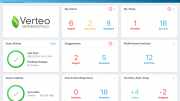Using a mobile-first approach to simplifying access to healthcare, Relatient is the leading SaaS-based patient scheduling and engagement platform in the United States. Their technology integrates with all leading EHR/PM systems to drive operational efficiency, increase appointments, reduce no-shows, enable faster patient payments and improve patient satisfaction.
Chief Product Officer David Dyke has spent more than 20 years pushing boundaries in the industry and shares his thoughts on where healthcare has been and where it’s going.
A lot has changed in the past two decades as far as healthcare. What do you think has been the most critical change and how has that impacted patient scheduling and engagement?
Healthcare people generally say FHIR, HL7, X12 or HIPPA. Those are all great answers, but what the internet has done for the development of healthcare tools and the integration of connected services – that just wasn’t a thing even 20 years ago. Each iteration of the internet has an exponentially positive impact on healthcare, now led of course by mobile applications. Texting continues to be crucial too. The response rates that our customers see for SMS texting is 4X, 5X and even 10X in some cases that of email. Phone call usage is continuing to trend downward. How many of you answer your phone if it’s a number you don’t recognize? Not many. And how many of you answer your phone if it’s a number you do recognize? Still not many.
Today, Relatient engages with more than 50 million unique patients per year on behalf of provider groups and health systems across the U.S. through our self-scheduling, patient messaging, chat, digital registration and payment solutions. As we look at taking the next step forward, getting patients even more familiar and trusting of technology will be key. Despite the reluctance of patients to answer their phones, most of us still dial out when we need to reach our doctor.
We’ve come a long way with the almost immediate accessibility of information through Internet-based software and mobile applications vs. the isolated static systems we used to have that were stuck inside a basement, but we’re not there yet.
What are the biggest challenges as you work to improve scheduling and patient engagement?
One: We do not have a crystal ball and know the exact outcomes and benefits of the products we’re developing. And two: It takes longer to create and improve anything than most of us would like. Each step of the process takes time from designing to building and then letting the customer test it for a reasonable amount of time — 3 days for something small, or several months for big stuff — before we decide it’s good enough to take to market. I also think people believe software should be super-fast. It can be super-fast. It also has to be super-good. You don’t want to sacrifice quality for speed.
You’ve said that seeing people improve and exceed expectations is easily the most fulfilling aspect of your job at Relatient. What do you mean by that?
We just had a major demo with our engineering team in India who are not consumers of U.S.-based healthcare — so while they are experienced, it’s not something they live with day-to-day. They made a few leaps in areas that we hadn’t necessarily described as objectives. I love it when folks make it a point to really understand the end user’s pain points and then take it upon themselves to solve those issues in surprising and delightful ways.
How important is the conversion from fee for service to value-based care for both your business and healthcare overall?
Bending the cost curve is still the defining goal in U.S. healthcare. As value-based care programs grow and show positive results, they are expanding — covering more service types, more patients and more provider organizations. One of the essential drivers in VBC is proactive and preventative engagement that changes the behavior and outcomes of individual patients and ultimately populations. That’s a big area where Relatient helps.
Improving an organization’s capacity to see patients — to provide real-time visibility into their capacity which helps everyone involved balance acute and urgent needs with routine and preventative services. And we all recognize that getting an appointment scheduled is a step on the journey, not the full trip. It’s why we focus on helping providers communicate with their patients in personalized and targeted ways. Whether it’s an effort to nudge a behavior change, remind about upcoming events, improve patient readiness — or measure satisfaction, outcomes and adherence across the continuum of care — having a unified communications platform can simplify the mechanics.
As you look back over the past 20 years in healthcare, what if anything would you change?
One of my lifelong goals — and I am happy to put this in my profile — is to remove the fax machine from healthcare in the U.S. And I have lost that battle 25 years in a row. It’s such an easy tool to use as one of the original ways that information was exchanged in healthcare. It’s still being used because it works. The internet is chipping away at that.





